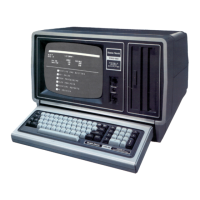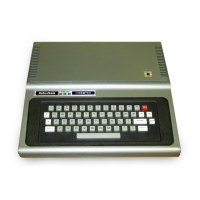DUMP
Advanced Programmer's Command
DUMP filespec (parameters)
Copies
an
area of memory
to
a disk file named filespec.
You
can
use DUMP
to
store a machine-language program from
memory to a file.
DUMP can produce a program or a core ASCII file. A program
produced with DUMP
can
then
be
loaded or executed at any time.
(An ASCII file cannot
be
loaded with the LOAD command or executed
with the
RUN
command.)
The default extension for program dumps
is
ILMF, and the default
extension for ASCII dumps
is
ITXT.
You
can use some or
all
of the following parameters:
START =address starts the dump at address.
You
must include
this parameter. The address must
be
above 2FFF
hexadecimal or 12287 decimal.
END
= address ends the dump
at
address.
You
must include this
parameter. END must
be
greater than or equal to START,
and
can
be
either a hexadecimal or decimal number.
TRA
= address sets the address at which your program begins
executing after you load
it.
If
you
omit this parameter, any
subsequent
run
of the file will only load the program and
return
you
to
TRSDOS Ready. TRA can
be
either a
hexadecimal or a decimal number.
ASCII specifies that the dump is
to
an
ASCII file. ASCII files
contain program code only.
No
system loading information is
written
to
filespec.
ETX = value specifies that the character
at
the end of
an
ASCII
file
is
equal
to
value. value
is
a hexadecimal number
in
the
format x'nn'. When
you
specify ETX, you must also specify
ASCII.
ETX cannot
be
abbreviated.
When you DUMP
to
an
ASCII file, you create a file that has the
identical file structure
as
a SCRIPSIT file. The system writes a special
character at the end of the file which can
be
changed with the ETX
parameter.
Examples
DUMP
ROUTINE/CMD
(START=>('7000'
,END=>('8000'
,TRA=
>(
'7000
' )
(ENTER)
dumps the area of memory starting at hexadecimal 7000 and ending
at hexadecimal
8000. This block of memory
is
written to a disk file
1-75

